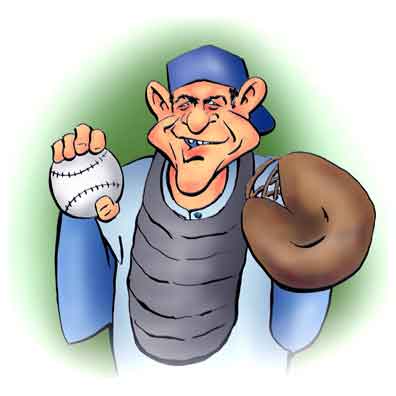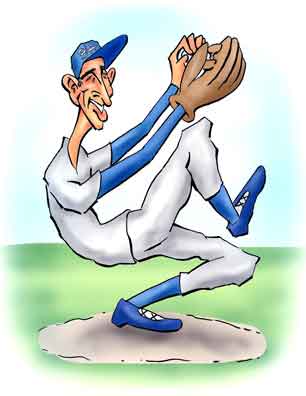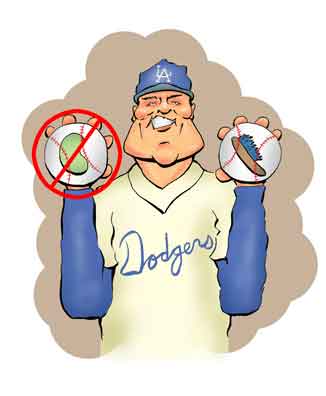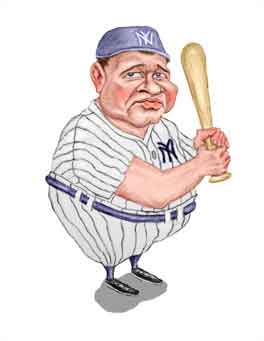
You'll read on a popular informational website that Carl Elwin Roe got his nickname when an uncle came over to visit for the first time and asked the three-year-old his name. Carl answered "Preacher" since one of the local minister's would take him for rides in his horse and buggy.
Actually Carl did say that his mom once told him that his self-dubbed sobriquet might have been because he really did like one of the local ministers. But there's another story that the name was bestowed on him by his grandmother. And there's yet ANOTHER tale that one day Carl told his dad he just didn't like the name "Carl". His dad asked what name he'd prefer and the kid replied "Preacher".
But the name stuck and Preacher (as we'll call him) had been born on February 26, 1916, in Ash Flat, Arkansas. This is deep in the heart of the Ozarks and Preacher's dad, Charles, was a country doctor. Dr. Roe and his wife Elizabeth had a total of six kids of whom Preacher was the penultimate. Soon after Preacher was born, the family moved to Wild Cherry about 25 miles to the northwest, and when he was six they relocated another five miles north to Viola.
Although Viola is in the Ozarks, the land has a surprisingly level topography. That's because the Ozark "Mountains" are actually formed from a plateau where the rivers and creeks have scoured the land. So there are areas where you have meadows and pastures rolling over the quite verdant countryside. You certainly won't see the stereotypical "hillbilly" residences teetering on a precipice.
Baseball was almost an inevitable career for a young Ozarker with athletic ability. In the 1920's and 30's everyone played baseball. Kids would organize a game wherever they could find a field and the men played in more or less organized leagues. Dr. Roe had even played as a semi-professional and supposedly was still playing past his fifties. It's likely Preacher's youngest brother Roy could also have made the pros but instead he opted for a career in education and school administration.
But Preacher was the one destined to hurl the horsehide and when he was young he was good enough to play on teams with grown-ups. In high school he easily made the varsity and after he graduated he landed a scholarship to Harding College (now Harding University) which is about five miles southeast of Bald Knob. For those not highly versed in Arkansas geography but are fans of Elvis, that's about 100 miles west of Memphis.
Unfortunately, the Battling Bisons - the Harding team - had not done well. In fact in 1935, they lost all their games. But they began to pick up wins once Preacher was on the mound, and he came to the attention of the baseball scouts in 1937 when he once went 13 innings and struck out twenty-six batters. Despite this impressive feat (and on the advice of his dad), Preacher remained in college another year. Then in 1938 Branch Rickey, the general manager of the St. Louis Cardinals, signed him up.
Unfortunately, in his professional debut Preacher did not do well. He gave up four runs in less than three innings and had an Earned Run Average of 13.5. For those not familiar with baseball jargon that is NOT a good statistic.
So Preacher put in a spell with the minors - and quite a spell at that. It wasn't until 1944 that he pitched his next major league game. This was the opening game for the Pittsburgh Pirates. There he began to show his mettle and in 1945 he led the league in strikeouts.
In Preacher's day even the best players had an off-season job. Although he hadn't graduated from college - he was one semester shy - he ultimately got a teaching certificate1 and taught math and coached - not baseball - but basketball, both boys and girls, in Hardy, Arkansas. Back in 1938 he had married Mozee Clay (whom he had known since he was a kid) and they had two kids, Tommy and Elwin C., Jr. His marriage with Mozee was both happy and long, spanning well over sixty years.
Footnote
Although some sources state that Preacher went back to college and got his degree, at the time a teaching certificate did not require a degree. In fact, you didn't need to complete high school. The certificate was awarded as long as you could pass the Arkansas Teachers Examination. In 1923 a teenager named James Corbitt Morris passed the teachers exam and began teaching school even though he had only completed the eighth grade. Again there is a popular informational reference that states James attended college and even graduated, but there's no reference where James himself made such a claim.
As there were few teaching resources in the area James wrote songs to help his students learn history. One of them began:
Well, in 18 and 14 we took a little trip
Along with Colonel Jackson down the mighty Mississip'
We took a little bacon, and we took a little beans
And we met the bloody British near the town of New Orleans.
Later another singer heard the song and recorded it. It was to put it mildly a hit. James was able to quit teaching and under the name Jimmy Driftwood wrote a plethora of other songs during his long life and ended up with three Grammy Awards.
Honesty compels to state that Preacher's time in Pittsburgh was not auspicious. Part of the problem was that in 1945 there was an incident that changed his pitching style. Preacher had been a hard tossing fastballer where he could hurl the ball at 100 miles per hour. But while back home teaching and coaching, Preacher got into an altercation with a referee. It got physical and Roe ended up on the floor with a fractured skull.
For many that could have been a career ending injury. But Preacher stuck it out even though for the next two years he struggled. In 1946 he went 3-8 and in 1947 he was 4-15. His ERA jumped above 5. With such a performance normally the team would have simply dropped him. Fortunately, Branch Rickey had moved from St. Louis and was now the general manager of the Brooklyn Dodgers. So Branch picked up Preacher in a trade.
Brooklyn was the right place at the right time. In 1948, and still having physical problems due to his injury, he adjusted his play to be more of a control pitcher. It also helped that he was playing on the same team as Peewee Reese, Gil Hodges, Duke Snider, and of course, the great Jackie Robinson. In 1948, Preacher racked up a twenty game season at 12-8.
In 1949, Preacher opened the second game in the World Series and won. Unfortunately, none of the other Dodger pitchers did and the Yanks took the Series, 4-1. But Preacher was also in the All Star Game and in his one inning - the top of the ninth - he retired the three batters, all Yankess: Vic Wertz, Vic Raschi, and the great Yogi Berra. Yogi flied out, and Wertz and Raschi both grounded out.

Yogi
He flied out.
Without doubt, Preacher's best year was 1951. He won 22 out of 25 games. When he retired in 1954 - at an elderly 39 - he had racked up a quite respectable record of 127-84 and an Earned Run Average of 3.43. This may seem a bit high for an ERA but it's respectable enough. It's the same as Cy Young, and compares with the 3.31 ERA of Justin Verlander, Nolan Ryan (3.19), and Roger Clemens (3.14).
All in all Preacher has been rated highly and his teammates agreed. Catcher Roy Campanella said Preacher was the best pitcher he ever caught for. Sal Maglie was right behind followed by Don Newcombe.
Like many pitchers Preacher was not great at the bat. His best season was 1954 where his batting average was 0.154. His career average was 0.110 and in 1953 he hit his only home run. But Sandy Koufax - one of the greatest pitchers ever - had a batting average of only 0.097 and 2 career home runs. For comparison Don Drysdale - a "hitting" pitcher - had a career average of 0.186 and 29 home runs. Of course, some pitchers did better particularly if they switched positions as did one chap named George.

Sandy

Don

A Chap Named George
Preacher as had some other hurlers been suspected of using the once allowed but by-then forbidden spitball. After he retired he did 'fess up that he'd toss the spitter. But not as often as people think. It was more important, he said, to have the batter think you were throwing a moisture laden spheroid than actually throwing it.
Back home Preacher ran a supermarket in West Plains, Missouri, and more or less led a normal life. Even now he is included in lists of "Famous Ozarkers', and in one of his later interviews, he commented on how baseball had changed regarding the liveliness of the ball, the changes in the strike zone, and of course, the money. But he remained positive about his career and the sport. Preacher lived ripely to 2008, age 92.
Of course, baseball, perhaps more than any other sport, is noted for its levity and humor. So perhaps it's best to end up this Paen to the Preacher with some baseball bon-mots.
| What happened when a zombie was pitched four balls? | He became one of the walking dead. |
| Did Sir Lancelot ever play baseball? | Yes, but only knight games. |
| Why did the baseball pitcher get into trouble? | He became the designated spitter. |
| What does a baseball player do when he gets too old to see? | He becomes an umpire. |
And of course we have to end up with:
| What's more amazing than seeing a line drive? | Seeing a preacher row. |
References and Further Reading
"'Preacher' Roe (1916–2008), Encyclopedia of Arkansas, Dave Malone, August 17, 2023.
"From the Ozarks to the Mound: The Early Life of Preacher Roe", Chris Herbolsheimer, West Plains Daily Quill, March 3, 2024.
"Preacher Roe", Warren Corbett, Society for American Baseball Research, June 19, 2013.
"Josh, Satch Best Says Roy", The Detroit Tribune, August 9, 1958, p. 5.
"1949 World Series - Game 2, October 6, 1949", Mel Allen and Red Barber (announcer), Classic Baseball.
"Preacher Roe", Baseball Reference.
Introduction to Ozarks Studies, Dr.Brooks Blevins (lecturer), Missouri State University, 2013.
"Interview with Preacher Roe", KY-3 Television, Springfield, Missouri, October 5, 2007.
"Preacher Roe", Find-a-Grave, Memorial ID: 31264638, November 10, 2008.